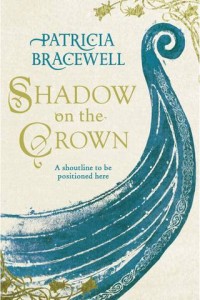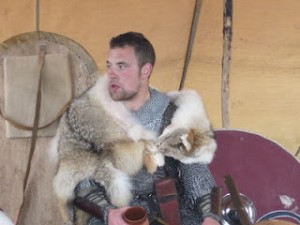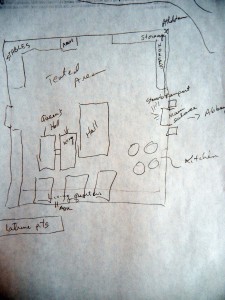My colleague, naval historical fiction writer Antoine Vanner, has asked me to join a blog hop titled My Writing Process. Antoine’s Writing Process post appears at his Dawlish Chronicles website, and I urge you to hop over there and read about his series of novels that follow the exploits of a British naval officer of the Victorian age.
Participants in this Blog Hop have been asked to respond to four specific questions about our work, which seems easy and undemanding – until one sits down to do it! Here are my answers.
1. What am I working on?
My current project is titled The Price of Blood. It is the sequel to my debut novel, Shadow on the Crown, and it’s the middle book of my Emma of Normandy Trilogy. The title is taken from William of Malmesbury’s 12th century History of the Kings of England, and it is a reference to the relentless waves of Viking armies that attacked England in the early 11th century. The Price of Blood will be published by Viking (yes, Viking) in February, 2015. 
2. How does my work differ from others of its genre?
My trilogy is set in pre-Conquest England, so the characters are not pulled from the more familiar historical fiction crowd like the Tudors and those devilish Angevins. The 11th century setting, though, made my first manuscript difficult to sell until the editorial board at Viking took a look at it and wasn’t put off by the tongue-twisting names of the characters or the early medieval time period. As it turned out, Shadow on the Crown seems to have tapped into a growing interest in early English history and in the Vikings. Bernard Cornwell’s Saxon Tales (9th c.), of course, have been popular for years. Now Nicola Griffith’s Hild, about a 7th century Anglo-Saxon saint has captured a great deal of attention, and the History Channel series VIKINGS (8th-9th c.) has brought men with names like Ragnar Lothbrok and King Ecbert of Wessex into our living rooms. This is the kind of synchronicity that I couldn’t have imagined when I first began to write my books.
3) Why do I write what I do?
I’m writing a trilogy about Emma of Normandy because I was seduced by my central character – a queen of England who was unfamiliar to me and whose story intrigued me. One of the first popular history books I found that mentioned Emma described her as strong and resourceful, but also implied that she was ambitious and self-serving because of her marriage alliance first with an Anglo-Saxon king, and then with England’s Danish conqueror. It struck me that this was a simplistic view of what Emma must have experienced, and that her story must have been far more complicated and fraught with tension and conflict. What more could a writer ask for in looking for a subject?
4) How does my writing process work?
I begin with my characters because I need to know each one of them, however minor, inside and out. I write down their physical attributes, their histories, their families, what they believe, desire, need, hate, love – until I have a long list that helps me determine how each character will react in any given situation. Then I turn to the history and plot out the events that have been recorded. Those events usually suggest incidents and conflicts that have not been recorded but might have occurred, so I begin to fill in big historical blanks with possibilities. When it comes to actual writing, I think in terms of scenes, and each scene is blocked out before I begin to write. What is the setting? Who is there? Whose viewpoint will I be writing from and why?
I have numerous drawings that I’ve made of towns, royal estates, and chambers so that I’m clear about what my setting looks like when I start to write.
My first draft of a scene may be only one page long, but I go back over it and re-work it so that it grows from the inside out. By the time I’ve completed the novel’s first draft, it is filled with scenes that have already been revised as much as 15-20 times. (If only I could get it right the first time!) On my second and third drafts I revise all the scenes again because the real writing – the juicy stuff – happens in the re-writing. It’s a long, grueling process, and the research, of course, continues all the way through.
And now let me introduce the three fine writers who will be joining this blog hop on April 14:
Jenny Barden is an artist-turned-lawyer-turned-writer with a love of history and adventure. She has written two epic Elizabethan historical novels based on famous voyages to the New World; they are Mistress of the Sea and The Lost Duchess published by Ebury Press (Random House UK). Read her post at http://www.jennybarden.co.uk/jenny-bardens-blog/
Gillian Bagwell is the author of three acclaimed historical novels: The Darling Strumpet, based on the life of Nell Gwynn, 17th century actress and mistress of Charles II; The September Queen, the story of Jane Lane, who risked her life to help the young Charles II escape after the Battle of Worcester; and Venus in Winter, which covers the first forty years of the life of the formidable four-times widowed Tudor dynast. Gillian, now working on her fourth novel, will post on her Nell Gwynn blog site: http://www.nellgwynn.blogspot.
Anne Leonard is the author of the fantasy novel Moth and Spark (Viking 2014) and is at work on a subsequent novel. She has served time as a lawyer and as an academic. She lives in Northern California. Look for her post at AnneLeonardBooks.



